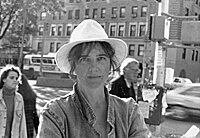Buster Keaton shot The General in and around Cottage Grove, after deciding that Southern Oregon looked more like Civil War era Georgia than Georgia did.
Everything else about the production was scrupulously authentic. Keaton had a big budget and complete creative control. He used both.
Keaton’s gift for complicated and often dangerous physical comedy was never more astonishing, and the film has been praised as masterful on virtually every level, including its Mathew Brady-like evocation of the Civil War. Pacific Cinematheque
Local residents were recruited as extras, guaranteeing that stories about the summer Buster was here would be handed down through generations. This is the film to see if you do not know Buster.
Keaton was at the peak of his powers both as a director and as a performer. The famous train crash which is the visual climax was funded entirely by him – the studio vetoed it as too expensive.
As in all of Keaton’s pictures, he did his own stunts. For some, he risked his life. In another sight gag in The General, he had to beg/plead/threaten the train engineer to allow him to sit on the drive shaft of the train as it starts. The engineer initially refused, saying it was impossible for him to guarantee that Buster would not be thrown sky high with a unexpectedly sudden start.
The General did not make money at the box office, and Keaton never again was given complete creative control over a feature film. He did not realize he was making the film which would ruin his career in silent cinema, an art form he helped invent, when he came to Cottage Grove in 1926.
The General, now widely regarded as a masterpiece, is in the public domain. You can see it/download it in its entirety at www.archive.org
The Cottage Grove Historical Society has published a book about Busters summer in Lane County.



0 responses so far ↓
There are no comments yet...Kick things off by filling out the form below.
Leave a Comment